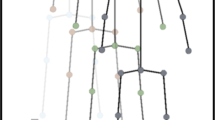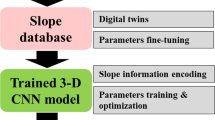Abstract
This study aims to explore the evaluation value of deep neural network and fuzzy integral (FI) technology on sports public services under the background of big data, so as to provide the public with more efficient and convenient services. A fuzzy integral-convolutional neural network (FI-CNN) algorithm model is constructed based on convolutional neural network (CNN) and FI, and is compared with the mixed National Institute of Standards and Technology, ImageNet, and Stanford sports event data sets. In addition, it is applied to the evaluation of public sports services in the eastern, central, western, and northeastern regions. The results show that the evaluation accuracy of the FI-CNN model based on the three data sets (98.8%, 85.9%, and 87.1%, respectively) are significantly higher than that of the not optimized FI-CNN model (96.3%, 82.8%, 83.2%), and the running time (633.5 s, 8169.4 s, and 1291.7 s, respectively) is much lower than that of the noise fusion convolutional neural network (NF-CNN) model (683.8 s, 8749.6 s, and 1673.2 s, respectively). The constructed FI-CNN evaluation model shows higher evaluation accuracy and shorter running time. The eastern region shows the highest investment in sports public services (4.26), the highest output of sports public services (3.98), and the highest effect of sports public services (4.23). In short, the overall performance of sports public service input, sports public service output, and sports public service effect in the eastern region is relatively good.







Similar content being viewed by others
References
Zhu Z, Yang Y, Kong Z et al (2017) Prevalence of physical fitness in Chinese school-aged children: findings from the 2016 physical activity and fitness in China—the youth study. J Sport Health Sci 6(4):395–403
Zhihan Lv, Li X, Lv H et al (2019) BIM big data storage in WebVRGIS. IEEE Trans Ind Inf 16(4):2566–2573
Hongyuan He, Tao He, Gang P (2018) Research on network service management platform for long term mechanism of sports in colleges. Wirel Pers Commun 102(13):1–11
Romsa B, Romsa K, Lim J et al (2017) Undergraduate sport management students’ perceptions of leadership skills through service learning. J Leadership Educ 16(2):129–147
Zhang Y, Ren J, Liu J et al (2017) A survey on emerging computing paradigms for big data. Chin J Electron 26(1):1–12
Guo C, Lu J, Tian Z et al (2019) Optimization of critical parameters of PEM fuel cell using TLBO-DE based on Elman neural network. Energy Convers Manage 183:149–158
Brady HE (2019) The challenge of big data and data science. Annu Rev Polit Sci 22:297–323
Yang HQ, Chen X, Zhang L et al (2020) Conditions of hydraulic heterogeneity under which Bayesian estimation is more reliable. Water 12(1):160
Yang HQ, Zhang L, Li DQ (2018) Efficient method for probabilistic estimation of spatially varied hydraulic properties in a soil slope based on field responses: a Bayesian approach. Comput Geotech 102:262–272
Zheng Y, Ke H (2020) The adoption of scale space hierarchical cluster analysis algorithm in the classification of rock-climbing teaching evaluation system. J Ambient Intell Hum Comput. https://doi.org/10.1007/s12652-020-01778-6
Xiaodong Xu, Wei Li, Qiong R et al (2017) Multisource remote sensing data classification based on convolutional neural network. IEEE Trans Geosci Remote Sens 99:1–13
Wang S, Lv Y, Sui Y et al (2018) Alcoholism detection by data augmentation and convolutional neural network with stochastic pooling. J Med Syst 42(1):1–11
Toshiaki H, Kazuharu A, Tetsuya T et al (2018) Application of artificial intelligence using a convolutional neural network for detecting gastric cancer in endoscopic images. Gastr Cancer Offic J Int Gastr Cancer Assoc 21(1):1–8
Han Q, Qing S (2018) Fuzzy comprehensive evaluation for rural public sports services. Trans Edutainment XIV 10790:207–224
Wei C (2016) International sports central city public sports service fuzzy comprehensive evaluation system research. J Comput Theor Nanosci 13(12):10174–10177
Zheng, Y, Liu S (2020) Bibliometric analysis for talent identification by the subject–author–citation three-dimensional evaluation model in the discipline of physical education. Library Hi Tech. https://doi.org/10.1108/LHT-12-2019-0248
Yin W, Schütze H, Xiang B et al (2015) ABCNN: attention-based convolutional neural network for modeling sentence pairs. Comput Sci 4:259–272
Yu Y, Gong Z, Zhong P et al (2017) Unsupervised representation learning with deep convolutional neural network for remote sensing images. Image Graph 10667:97–108
Acharya UR, Oh SL, Hagiwara Y et al (2017) A deep convolutional neural network model to classify heartbeats. Comput Biol Med 89:389–396
Yuming F, Chi Z, Wenhan Y et al (2018) Blind visual quality assessment for image super-resolution by convolutional neural network. Multimed Tools Appl 77(10):1–18
Ye F, Su Y, Xiao H et al (2018) Remote sensing image registration using convolutional neural network features. IEEE Geosci Remote Sens Lett 15(2):232–236
Qian G, Zhang L, Zhang Q (2018) An end-to-end training algorithm for conceptor based neural networks. Electron Lett 54(15):924–926
Christian G, Denis D (2017) Derivation of Hamaker dispersion energy of amorphous carbon surfaces in contact with liquids using photoelectron energy-loss spectra. Braz J Phys 47(6):1–12
Lv Z, Kong W, Zhang X et al (2019) Intelligent security planning for regional distributed energy internet. IEEE Trans Ind Inf 16(5):3540–3547
Chen Y, Li T, Bao B (2017) Choquet integral based interacting multiobjective assignment problem with fuzzy information. Syst Eng Theory Pract 37(8):2162–2170
Hong LEI (2018) Transformation of sports administrative functions under the collaborative governance of sports public service platform. China Sport Sci 9:6
Xinru G, Yanrong W (2017) Research on the effects of sports public service on sport production efficiency—the empirical test based on DEA and co-integration analysis. Cult Ind Res 1:12
Chen M, Gong D (2019) Discrimination of breast tumors in ultrasonic images using an ensemble classifier based on TensorFlow framework with feature selection. J Investig Med 67(Suppl 1):A3. https://doi.org/10.1136/jim-2019-000994.9
Mishkin D, Sergievskiy N, Matas J (2017) Systematic evaluation of convolution neural network advances on the imagenet. Comput Vis Image Underst 161:11–19
Mueggler E, Rebecq H, Gallego G et al (2017) The event-camera dataset and simulator: event-based data for pose estimation, visual odometry, and SLAM. Int J Robot Res 36(2):142–149
Chen M (2019) The impact of expatriates’ cross-cultural adjustment on work stress and job involvement in the high-tech industry. Front Psychol 10:2228. https://doi.org/10.3389/fpsyg.2019.02228
Park YJ, Kim HS, Kim D et al (2017) A deep learning-based sports player evaluation model based on game statistics and news articles. Knowl-Based Syst 138:15–26
Qiansheng J, Qi H (2020) Institutional deficiency and balanced development of China’s sports public service system. Front Sport Res 2(3):25–27
Wu Y, Liu WJ, Yuan CH (2018) A mobile-based barrier-free service transportation platform for people with disabilities. Comput Hum Behav 107:105776
Author information
Authors and Affiliations
Corresponding author
Additional information
Publisher's Note
Springer Nature remains neutral with regard to jurisdictional claims in published maps and institutional affiliations.
Rights and permissions
About this article
Cite this article
Yang, Y., Yang, J. & Huang, X. Evaluation of sports public service under fuzzy integral and deep neural network. J Supercomput 78, 5697–5711 (2022). https://doi.org/10.1007/s11227-021-04110-x
Accepted:
Published:
Issue Date:
DOI: https://doi.org/10.1007/s11227-021-04110-x




